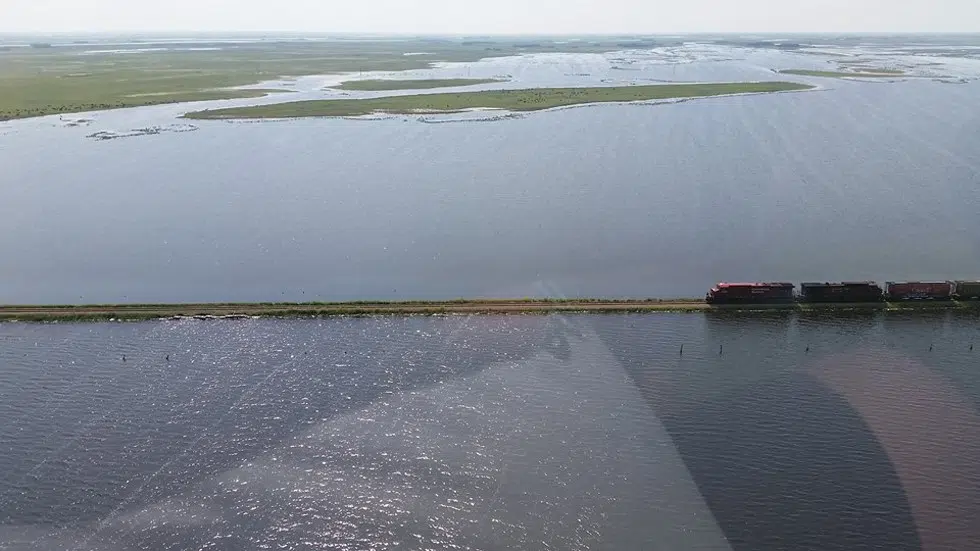
Quill Lakes flooding resolution still being sought
Water levels in the Quill Lakes have risen to record levels and there still isn’t a solution to prevent further flooding.
According to statistics provided by the Quill Lake Watershed (QLWS) the lakes in East-Central Saskatchewan have seen the water rise seven metres in 13 years. According to the QLWS, by August 2016, 27,000 acres of farmland has been washed out, over 57,000 acres of pasture lands is now under water. The organization is seeking a solution to divert water from the lakes. A design to create a flow to Last Mountain Lake didn’t go forward due to the Quill Lakes containing saline. QLWS chair Kerry Holderness said the “common ground flood mitigation proposal” would alleviate flooding by forcing new water into Last Mountian Lake therefore not allowing the salt water to contaminate it.
“The concept is to prevent and divert better quality waters from spring runoff, and summer rain towards Last Mountain Lake. This would mean that the higher saline content waters would be retained in the Quill Lakes,” Holderness said.
The first phase of that plan was withdrawn because the organization couldn’t complete the needed research ahead of the spring runoff. Due to environmental requirements work can not be undertaken in the winter. Holderness said the salinity of the water is a concern for residents and users of Last Mountain Lake, but the latest proposal will minimize contamination.


